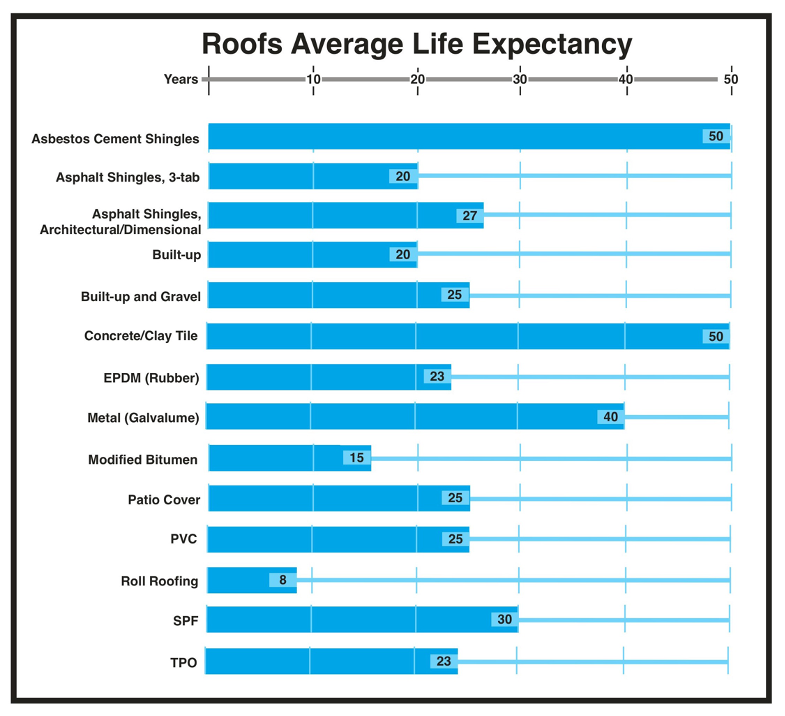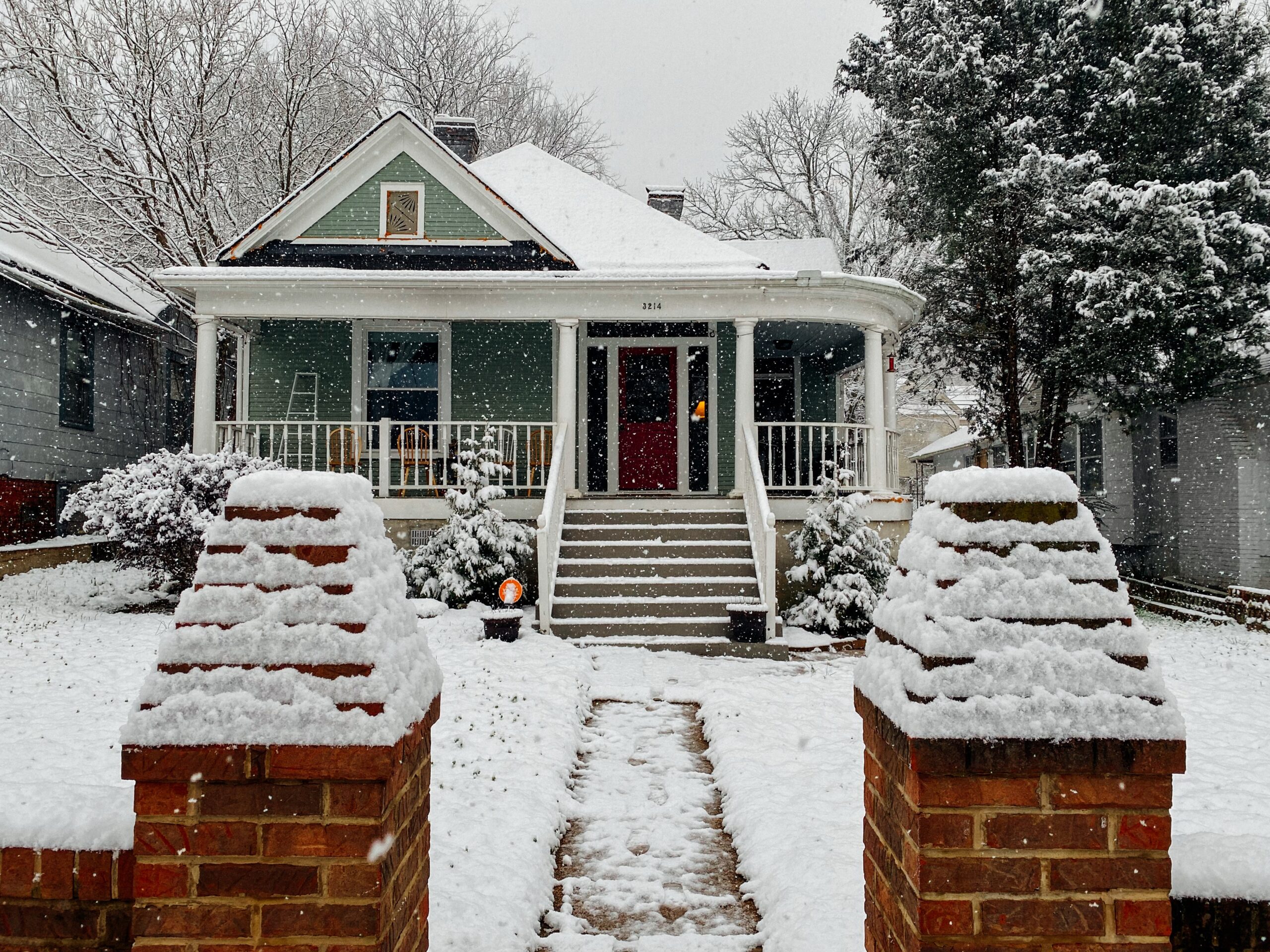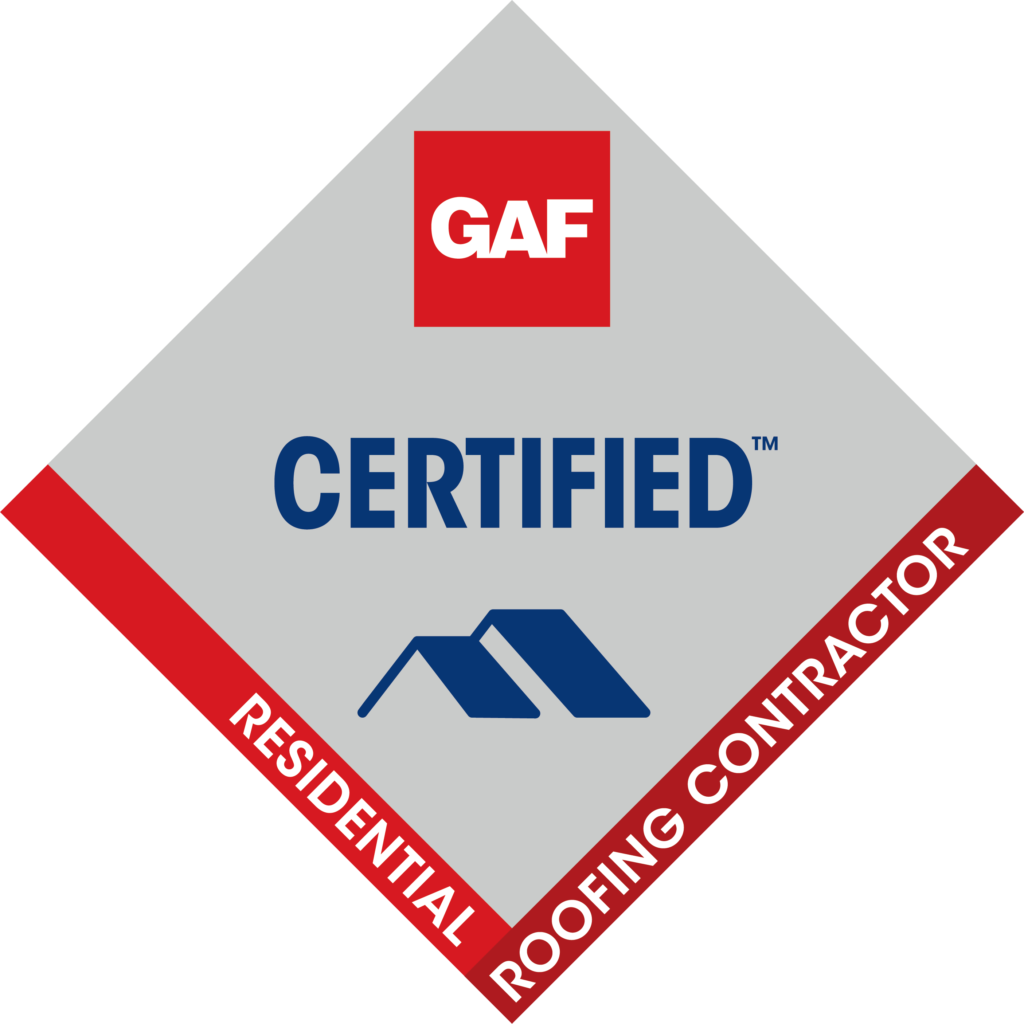A roof usually lasts for 20-50 years on average, depending on its kind. For instance, slate and clay tile roofs generally last for 50 years, asphalt and architectural shingle roofs for 25-30 years, metal roofs for 20-50 years, and wood shingle roofs for 30 years.

Image Source: https://www.howtolookatahouse.com/Blog/Entries/2018/8/what-is-the-average-lifespan-of-a-metal-galvalume-roof.html
Irrespective of the kind of roof your house has, the only way to help it last long is to maintain them well. You must inspect your roof regularly for any damages and if there are any, you must opt for professional roof repair services without delay.
Here are some simple tips to maintain your roof in all weather conditions.
Keep the Gutters Clean
Every season, debris keeps collecting in your gutters. It’s important to clean them and keep them free of blockages to maintain your roof. If water cannot flow freely away from your house through the gutters, problems can arise from the basement to the ceiling.
You can prevent roof decking rot associated with choked gutters by climbing on a ladder from time to time. Else you can contact a professional gutter cleaning provider to clear any blockages.
Trim Landscaping and Back Trees
Tree limbs lying close to your house may look beautiful. But they can cause some trouble. Branches and limbs knocked loose due to a storm can cause instant damage to the roof and allow critters like squirrels to easily invade your home. A good way to maintain your roof is to clear away any bothersome branches.
As any kind of landscaping begins to grow a bit close to your roof or home, consider trimming it back a couple of feet. Thus, you can prevent them from causing any problems during an unpleasant weather change. Your shrubs and other plants must keep adequate space for the gutters to properly release wastewater from the house and keep the foundation unharmed.
Remove Snow from the Roof
If a lot of snow gets collected on your roof, this can create problems. In case the roof is shabbier or older, a large mass of snow on it can cause it to collapse.
To get rid of all that snow, carefully scrape it away using a snow rake. As a result, the snow can no longer put its weight on the roof. This can minimize its chances of collapsing.
Check for Missing or Cracked Shingles
Summer weather can also affect your roof. At times, too high temperatures can cause your roof’s shingles to crack or shrink. The roof can even tear off completely due to extreme summer storms.
While long roofs are created to last long, harsh summer weather like tropical storms and hurricanes can damage even the sturdiest roofs. By inspecting the roof from the ground, you can find any areas where shingles might be damaged or missing. Even better, you can call a professional roofer to do the same.
Remove Mold and Moss from the Rooftop
Winds can easily carry mold spores, moss, and algae and allow them to spread from one roof to another. While algae generally don’t affect an asphalt roof much, mold and moss can cause damage. Both mold and moss thrive in moist areas. Therefore, if you detect them on the roof, moisture may be collecting in an area or there could be a leak.
Besides, moss can cause asphalt shingles to curl. In bad weather, this can increase the chances of losing shingles. Then moisture can easily enter through other layers of the roof. The roof structure can decay in contact with mold and undergo severe, costly damage.
The global market for asphalt shingles is projected to grow at a CAGR of 3.8% from US$ 7,186.7 million to US$ 9,722.4 million between 2019 and 2027. The more people use them, the more they should be aware of how to take care of these roofs. One great way is to get rid of any mold or moss from your rooftop at the earliest.
You can use water and liquid chlorine bleach to spray any moldy, mossy areas of the roof. Let it sit for 15-30 minutes. After that, power-wash it off. Make sure to direct the run-off properly so that no landscaping on the ground is harmed.
Check for Leaks in the Ceiling and the Attic
About 40% of all building-related issues are associated with water intrusion and water generally penetrates through the roof.
It’s difficult to identify infiltrations or leaks in the roof by visually inspecting it from the outside. When you inspect your roof, remember to take a few more minutes to check the ceilings, particularly in the attic. Look for any signs of water damage or simply moisture.
If there is water damage, contact a professional roof repair provider to inspect the problem and resolve it before further damage happens.
Ensure Strong Roof Insulation
If the roof is not insulated well, it can lose almost a quarter of its heat. Fitting your roof space, loft, or attic with sufficient insulation can help you save on energy bills. At the same time, you can keep your house at a suitable temperature.
If roofing insulation is installed properly, it can sometimes last more than 4 decades. Thus, it can more than pay for its cost by helping you save energy. Plus your carbon footprint will also reduce and your home would become more comfortable over time.
Get a Professional Roof Inspection
The best way to maintain your roof is to let it be examined by professionals now and then. They have more knowledge of different roof problems and can thoroughly inspect your roof for any of those damages.
Frequency of Built-Up Roof Problems

Image Source: https://link.springer.com/article/10.1057/rlp.2010.18/figures/2
Being a homeowner, you can try many ways to protect the roof and extend its lifespan. Nevertheless, you may miss certain signs of decay and damage that a professional will detect promptly.
If you wish your roof to stay in good shape despite weather changes and last as long as possible, consider scheduling a professional roof inspection 1-2 times every year, especially after heavy storms. A well-maintained roof is one of the crucial requirements to keeping your house in a good state.







